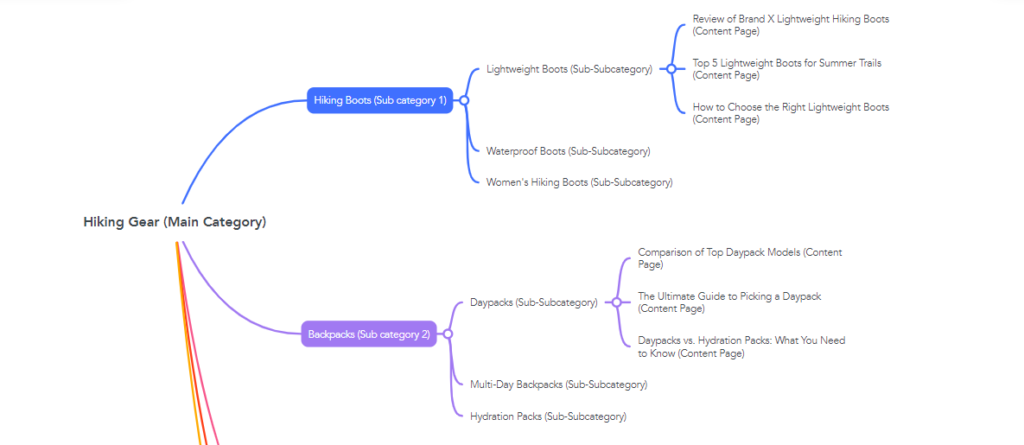A silo structure in affiliate marketing refers to a strategic way of organizing and linking content on a website to enhance its relevance and authority in search engines. This approach mirrors the way a library categorizes books into different sections and sub-sections, making it easier for visitors to find what they’re looking for. In the context of an affiliate website, a silo structure involves grouping related content into distinct categories or ‘silos’, each focusing on a specific niche or topic.

Key Components of a Silo Structure
- Main Categories (Silos): These are broad topics that represent the primary focus areas of your website. Each category should be distinct and encompass a core segment of your affiliate niche.
- Subcategories: Within each main category, there are subcategories that delve deeper into specific aspects of the main topic. These should be directly related to the main category and offer more detailed information.
- Individual Content Pages: These are articles, blog posts, product reviews, etc., that provide detailed information on specific aspects of the subcategories. They should be rich in content and optimized for relevant keywords.
- Internal Linking: This is a critical aspect of the silo structure. Pages within a silo are interconnected through internal links, which helps in distributing page authority and guiding users and search engines through your site’s content.
Benefits of a Silo Structure
- Improved SEO: By organizing content into silos, search engines can more easily understand the structure of your site and the relevance of your content to specific search queries.
- Enhanced User Experience: A well-organized site structure helps users navigate your website more easily, leading to better engagement and potentially higher conversion rates.
- Authority Building: Focusing on specific niches within each silo can establish your site as an authority in those areas, which is crucial for affiliate marketing success.
Example in Affiliate Marketing
Imagine you run an affiliate website focused on outdoor gear. Your silo structure might look like this:
- Main Category (Silo): Hiking Gear
- Subcategories: Hiking Boots, Backpacks, Navigation Tools
- Individual Content Pages:
- Hiking Boots: Reviews of various hiking boots, buying guides, and care tips.
- Backpacks: Comparison of backpack brands, features to look for, and user guides.
- Individual Content Pages:
- Subcategories: Hiking Boots, Backpacks, Navigation Tools
In this structure, all content related to hiking boots would be interlinked, separate from content about backpacks, yet under the broader umbrella of Hiking Gear. This organization helps search engines and users alike to find and understand your content more effectively, boosting your site’s performance both in terms of SEO and user engagement.
By adhering to this silo structure, you not only make your website more navigable but also reinforce its thematic relevance, which is a cornerstone of effective SEO and affiliate marketing strategy.
Interested to learn more? Check out all affiliate marketing glossaries!

